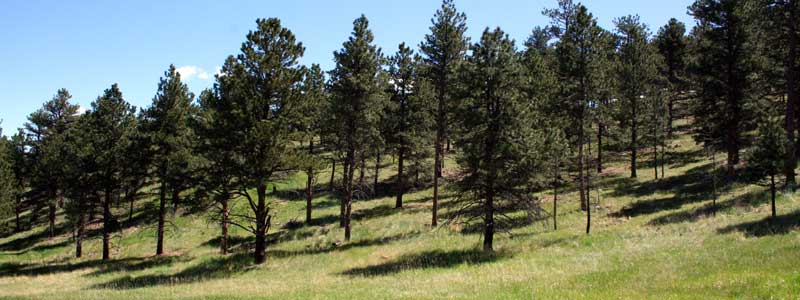
“But I moved to the mountains because I love the trees!”
Working in the field of wildfire mitigation, I hear this often.
And yet my job is to convince them to cut them down, in order to protect their home from the threat of wildfire.
But it’s more than that.
In fact, if you do love the forest and all that makes up its ecosystem, the best thing you can do is thin it out.
It used to be that nature did that job for us. Wildfire is natural and if no man ever lived in these woods, it would happen on any way. Thousands of years ago, fires would break out form lightning strikes on regular intervals depending on the type of forest and elevation. Some forests can have low level fires every 20-30 years, others at higher elevations can go 200 years.
Low level fires tend to burn to stay at the ground level instead of going up into the trees. If you take a closer look at some older Ponderosa pines, you might notice the singe marks in its bark. Ponderosa have a very thick bark that helps resist fire, allowing it to survive.
Because of destructive fires occurring early in the 20th century, the Forest Service took a very hard line of suppressing fires for decades to come. This allowed our forests to become thicker and denser and also less healthy.
If you look at some of our Ponderosa Pine forests, they trees are thin and spindly and close together. A healthy Ponderosa Pine ecosystem will have larger trees spread out in park-like stands with space between them.
As the forest grows more dense, many sun-loving species are crowded out. Lodgepole pine is shade tolerant and tends to take over. This leaves little water and sun left over for aspen, or even spruce and Douglas-fir.
Fire mitigation on our own property helped preserve a rare species of tree found at this elevation — Limber Pine. They usually grow higher, but because our home is located on a cooler, north facing, 3-4 of these bushy trees took hold here. By opening up the canopy, it has allowed them to flourish the last few years.
This crowding of trees is less able to defend off insects and pests. Trees that are close together make it easy for the Mountain Pine Beetle to fly tree to tree, infesting them and ultimately killing them off. And because the Lodgepole Pine was the predominant target for them, it had a devastating impact.
Even wildlife thrive in a more open, diverse forest. Creating openings allows grasses, wildflowers, and young aspen and willow to grow. The tender young shoots of green are the preferred food of the hoofed mammals — elk, moose, and deer. Ever since the Cold Springs fire, we’ve spied more moose and elk browsing on the low growth plants.
So, as you consider doing wildfire mitigation, think not about a tree dying, but other types of life growing and prospering. Their very lives may depend on it.

